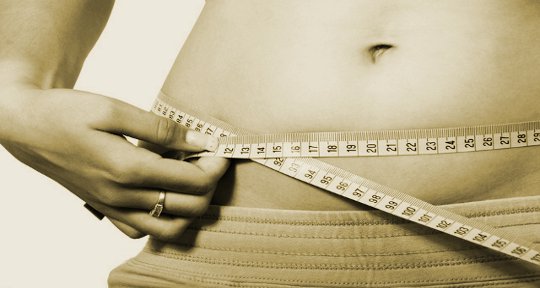
Researchers believe they’re on track to solve the mystery of weight gain—and it has nothing to do with overeating.
They discovered that a protein, Thy1, has a fundamental role in controlling whether a primitive cell decides to become a fat cell, making Thy1 a possible therapeutic target, according to a study published in the FASEB Journal.
The research brings a new, biological angle to a problem that’s often viewed as behavioral, says lead author Richard P. Phipps, a professor at the University of Rochester.
Although Thy1 was discovered 40 years ago and has been studied in other contexts, its true molecular function has never been known. Phipps’ laboratory reported for the first time that expression of Thy1 is lost during the development of fat cells, suggesting obesity could be treated by restoring Thy1.
They’re also working towards developing an anti-obesity drug, a Thy1-peptide, and have applied for an international patent to protect the invention. Phipps and colleagues are trying to identify a company to help with commercializing the patent asset and bring a new obesity treatment to the marketplace.
“Our goal is to prevent or reduce obesity and in this paper we’ve shown how to do this in principle,” says Phipps. “We believe that weight gain is not necessarily just a result of eating more and exercising less. Our focus is on the intricate network involved in fat cell development.”
Fatter Mice
Researchers studied mice and human cell lines to confirm that a loss of Thy1 function promotes more fat cells. Mice lacking the Thy1 protein and fed a high-fat diet gained more weight and faster, compared to normal mice in a control group that also ate the same high-fat diet.
In addition, the fatter mice without Thy1 had greater than twice the levels of resistin in their blood, a biomarker for severe obesity and insulin-resistance or diabetes.
Experiments using human fatty tissue from the abdomen and eyes showed similar results.
Born That Way?
Phipps and colleagues, including key researcher Collynn Woeller, a research assistant professor of environmental medicine, are continuing to investigate why cells with the potential to turn into fat cells lose the Thy1 protein, and why fat accumulates faster when Thy1 shuts off.
It’s not clear whether Thy1 levels are different in people at birth, or whether they change with time and exposure to various environmental agents.
To address the latter question, Phipps’ laboratory is separately studying whether chemicals known as obesogens–such as bisphenol A (BPA), flame retardants, and phthalates–reduce Thy1 expression in human cells and promote obesity. That study is funded by the National Institute of Environmental Health Sciences.
Disclosure Statement: The work reported in FASEB was funded by the National Institutes of Health, as well as grants from the Rochester/Finger Lakes Eye & Tissue Bank and the Research to Prevent Blindness Foundation.
Source: University of Rochester.
Original Study.
About the Authors of the Study
- Collynn F. Woeller, Department of Environmental Medicine
- Charles W. O’loughlin, Flaum Eye Institute, School of Medicine and Dentistry, University of Rochester
- Stephen J. Pollock, Department of Environmental Medicine
- Thomas H. Thatcher, Department of Environmental Medicine
- Steven E. Feldon, Flaum Eye Institute, School of Medicine and Dentistry, University of Rochester
- Richard P. Phipps, Department of Environmental Medicine and Flaum Eye Institute, School of Medicine and Dentistry, University of Rochester
Related Book:
at

Thanks for visiting InnerSelf.com, where there are 20,000+ life-altering articles promoting "New Attitudes and New Possibilities." All articles are translated into 30+ languages. Subscribe to InnerSelf Magazine, published weekly, and Marie T Russell's Daily Inspiration. InnerSelf Magazine has been published since 1985.

Thanks for visiting InnerSelf.com, where there are 20,000+ life-altering articles promoting "New Attitudes and New Possibilities." All articles are translated into 30+ languages. Subscribe to InnerSelf Magazine, published weekly, and Marie T Russell's Daily Inspiration. InnerSelf Magazine has been published since 1985.

























